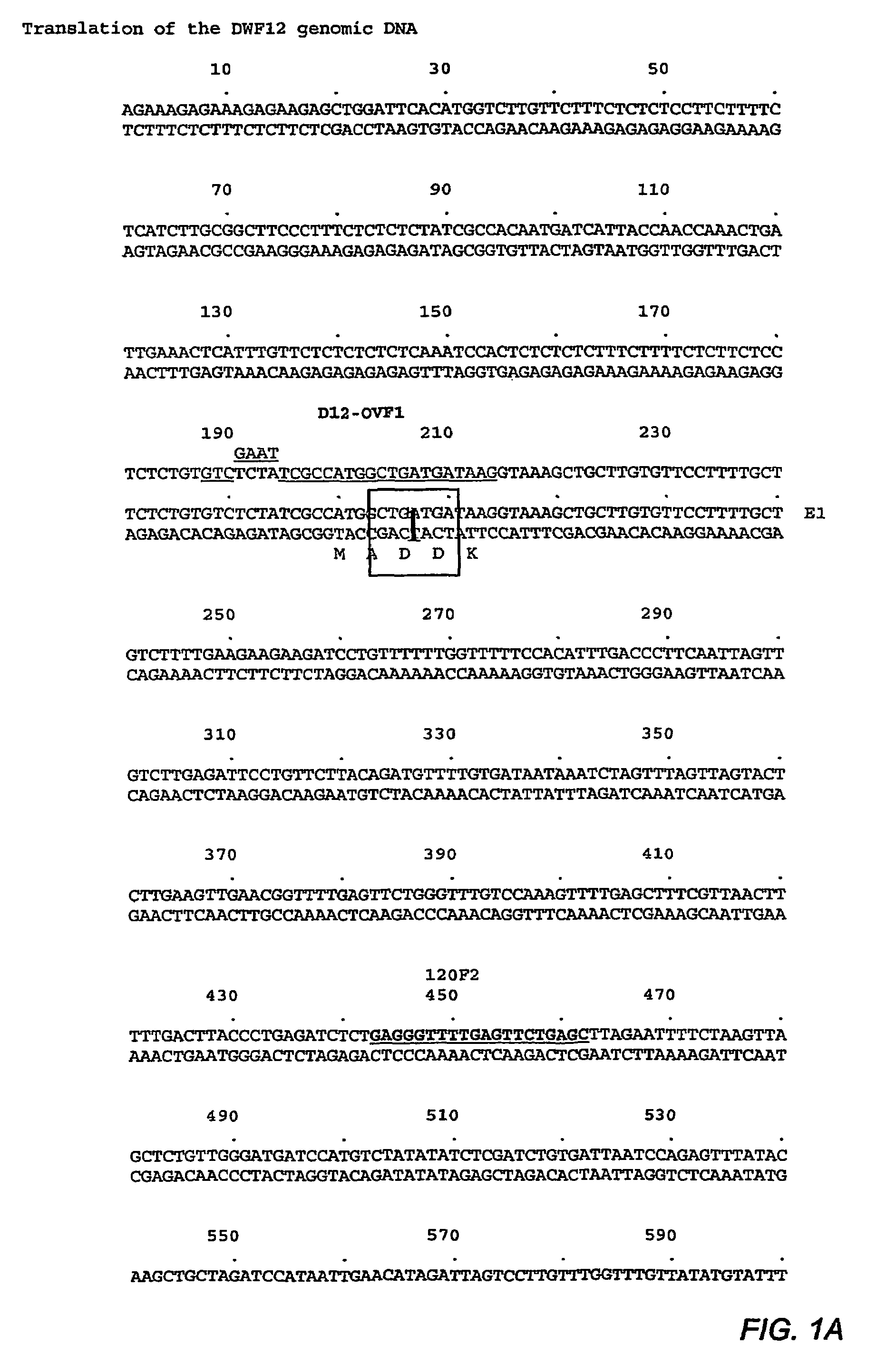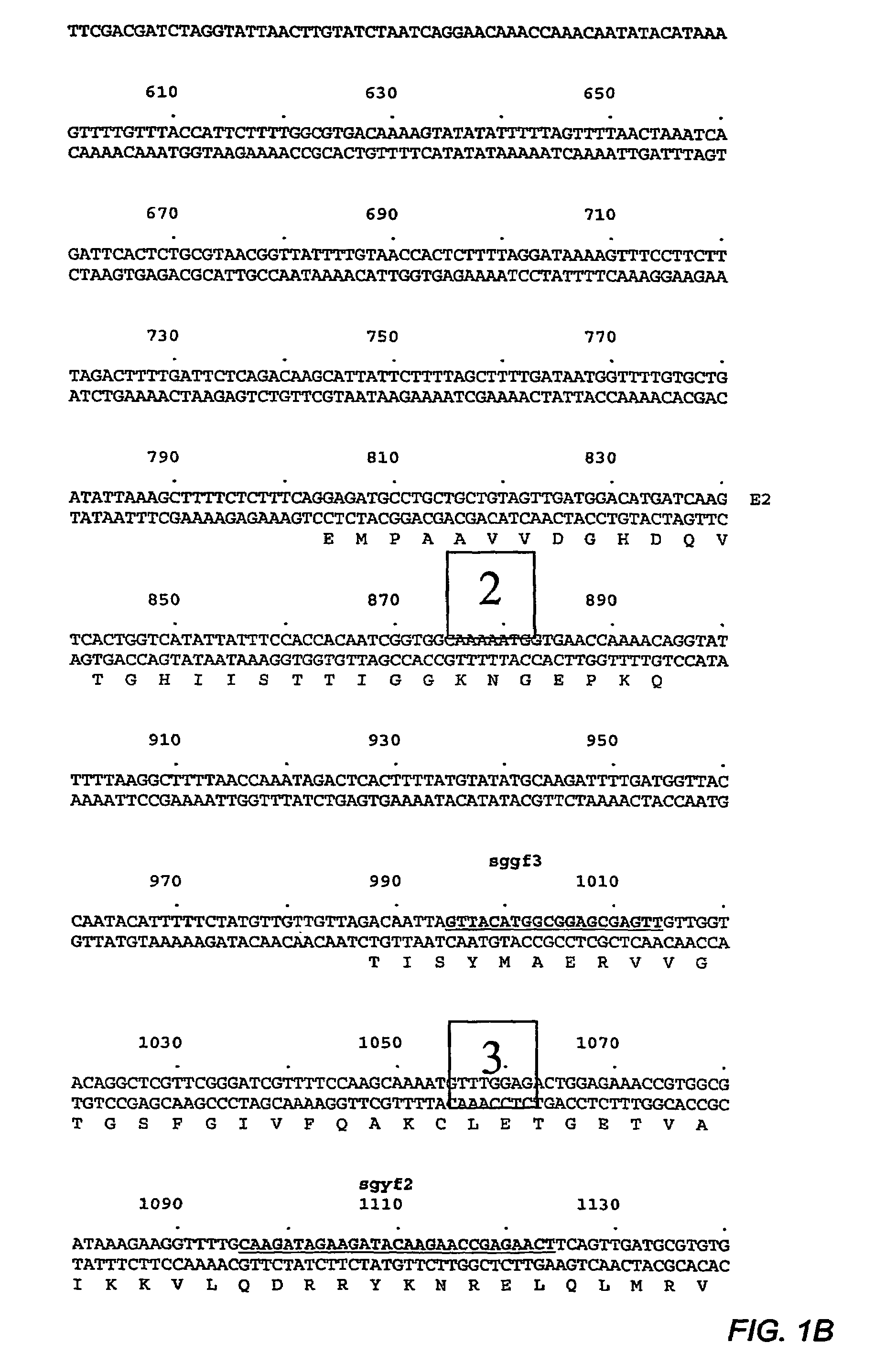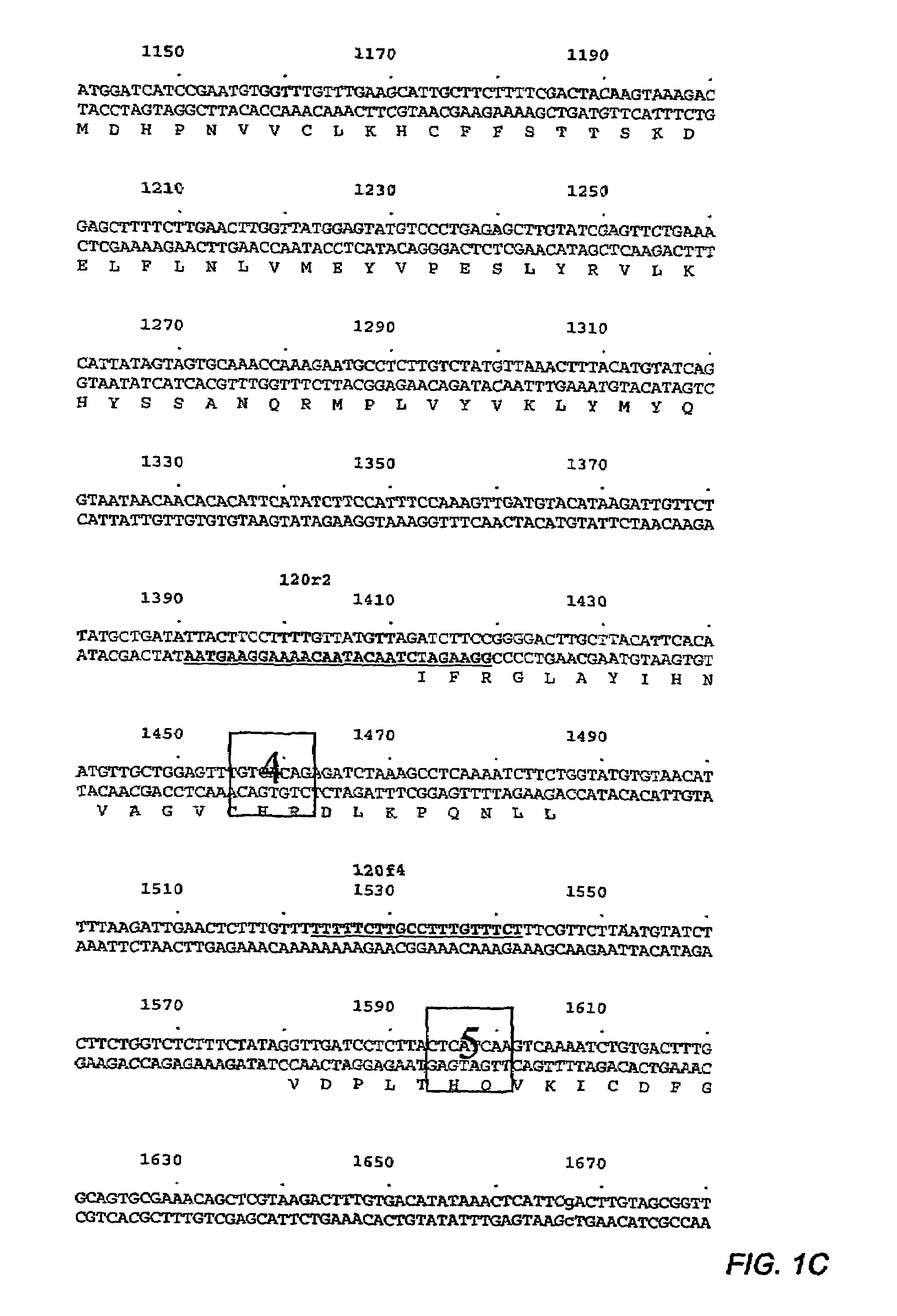DWF12 and mutants thereof
a technology of dwf12 and mutants, applied in the field of plants, can solve the problems of difficult to obtain additional components of br signaling, and achieve the effect of short robust stature and reduced or increased shaggy kinase activity
- Summary
- Abstract
- Description
- Claims
- Application Information
AI Technical Summary
Benefits of technology
Problems solved by technology
Method used
Image
Examples
example 1
Phenotypes of dwf12 Mutants
[0162]dwf12-1 and dwf12-2 plants were generated by EMS (ethylmethanesulfonate) mutagenisis using techniques well known in the art. The mutants were identified due to their characteristic dwarf phenotype. dwf12-1 and dwf12-2 plants were compared to a BR-biosynthetic mutant, dwf4-1, and BR-insensitive mutants bri1 and twisted (twd). The phenotypes of the two dwf12 alleles were similar to dwf4 and bri1 plants in that they all displayed dark green and round leaves, short and sturdier stature relative to wild type (Ws-2). A unique phenotype found only in dwf12 mutants was severe downward curling of leaves. Plants heterozygous for dwf12 mutations showed a semi-dwarf phenotype with a height intermediate between wild-type and homozygous mutant plants, suggesting that the dwf12 mutations are dominant-negative, gain of function, or haploinsufficient. Further morphometric analysis of the two dwf12 alleles, dwf12-1 and dwf12-2, indicated that the dwf12-2 mutations res...
example 2
Ectopic Overexpression of DWF12
[0163]Previously, we found that ectopic overexpression of the DWF4 gene encoding a rate-limiting step enzyme in the BR biosynthetic pathways resulted in bigger plants due to elongated cell size. Thus, the same approach was used to examine the effects contributed by DWF12 overexpression. A vector comprising the 35S promoter operably linked to wild-type DWF12 cDNA was compared to a vector control harboring only a vector. 11 independent transformants (AOD12) carrying the DWF12 overexpression construct consistently displayed a bigger plant phenotype, such as long petiole, elongated leaf blades, bigger flowers and weaker inflorescences. The bigger plant phenotypes of AOD12 suggests that the DWF12 gene is transcriptionally controlled, and this regulation is important in determining the cell sizes and whole plant morphology in Arabidopsis.
[0164]Thus, DWF12 sequences, polypeptides, mutants thereof and uses of these molecules are described. From the foregoing...
PUM
| Property | Measurement | Unit |
|---|---|---|
| Fraction | aaaaa | aaaaa |
| Fraction | aaaaa | aaaaa |
| Fraction | aaaaa | aaaaa |
Abstract
Description
Claims
Application Information
 Login to View More
Login to View More - R&D
- Intellectual Property
- Life Sciences
- Materials
- Tech Scout
- Unparalleled Data Quality
- Higher Quality Content
- 60% Fewer Hallucinations
Browse by: Latest US Patents, China's latest patents, Technical Efficacy Thesaurus, Application Domain, Technology Topic, Popular Technical Reports.
© 2025 PatSnap. All rights reserved.Legal|Privacy policy|Modern Slavery Act Transparency Statement|Sitemap|About US| Contact US: help@patsnap.com



